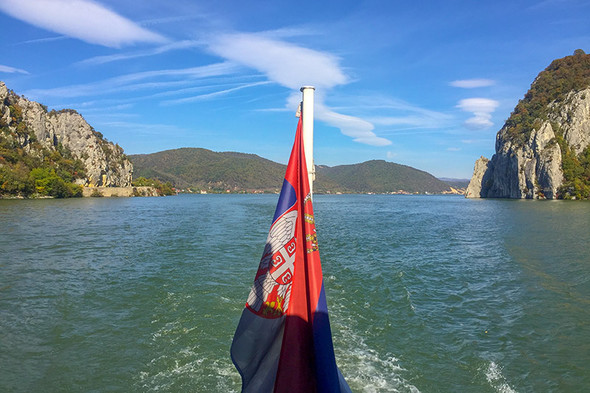A few years ago, if anyone had told me I’d be going on a wine tour in Serbia, I might have looked at them slightly bemused. Like many Western Europeans, Serbia, was unfortunately synonymous with the Balkan wars which followed the break-up of Yugoslavia in the 1990s. Yet here I was doing just that. Serbian #winelovers Tomislav Ivanovic and Igor Lukovic were staging the first Prokupac conference in Belgrade and a group of intrepid members of the #winelover community were heading to Serbia to celebrate the variety and to venture out into some of Serbia’s winelands in eastern and central Serbia.
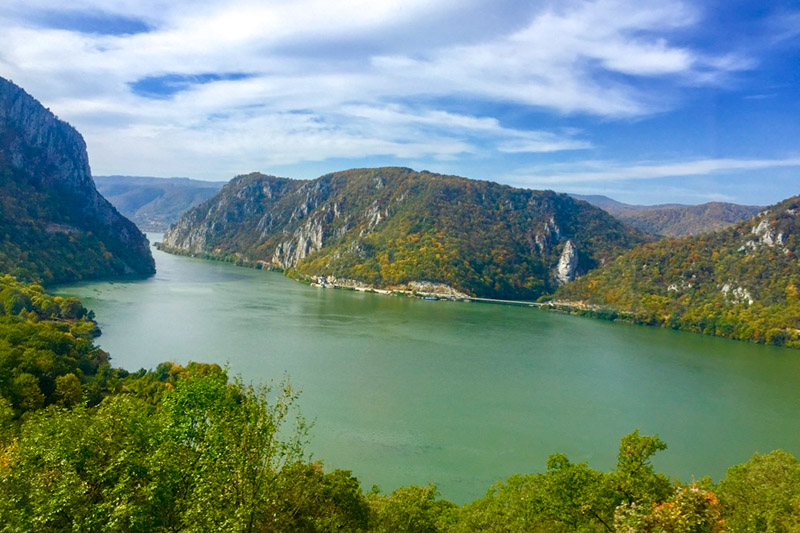
The Iron Gate, photo: Daniel Ercsey
Although most people don’t associate Serbia with wine, viticulture here, like in much of the region, dates back to prehistory and has long been part of Serbian culture. If we think back to the twentieth century, the former Yugoslavia was actually one of the world’s top ten wine-producing countries. However, like in other communist-controlled countries, the industry’s emphasis was in churning out as much as it could irrespective of the quality. After a decline following the collapse of communism, this is all beginning to change, with many small and medium-sized wineries now crafting increasingly high-quality wines and reviving old, forgotten traditions and varieties, such as Prokupac, the primadonna of the conference and subject of a WineSofa article and tasting last year on the first International Prokupac Day. The country now boasts around 25,000 hectares of vineyards, divided as of 2013 with the revised regional classification into 22 wine regions with further sub-regions.
Our first excursion took us to a region within the Timok valley, around 250km east of Belgrade, the Negotinska Krajina wine region, where we would sample wines from eight wineries.
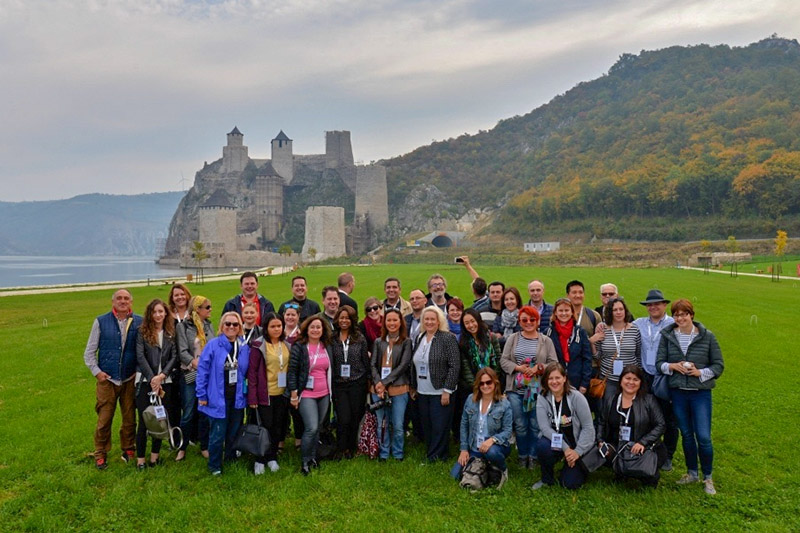
The #winelover group by Piroska Koltai - Wine a'More Travel
On the way, we were treated to spectacular views of the Danube both from the banks of the river and on the water, forming the border with Romania, where the #winelovers, always keen to share their vinous experiences with others, were occasionally able to take advantage of Romania’s stronger mobile signal and hence EU roaming to post their photos of the stunning scenery. We piled off the bus at the imposing medieval fortress known as the ’Guardian of the Danube’, the ten-towered Golubac Fortress, whose first written mention is as early as 1335. Recently renovated, the fortress, which marks the entrance to the Djerdap National Park, perhaps better known to us as the Iron Gates, is partially submerged under the waters of the Danube as a result of the construction of the hydroelectric dam in the Iron Gates gorge which significantly raised the Danube’s water level. Here it appears more like a lake, with Romania shimmering in the distance, before narrowing to form the spectacular gorge we would later sail through, glass of refreshing white Tamjanika in hand, naturally.
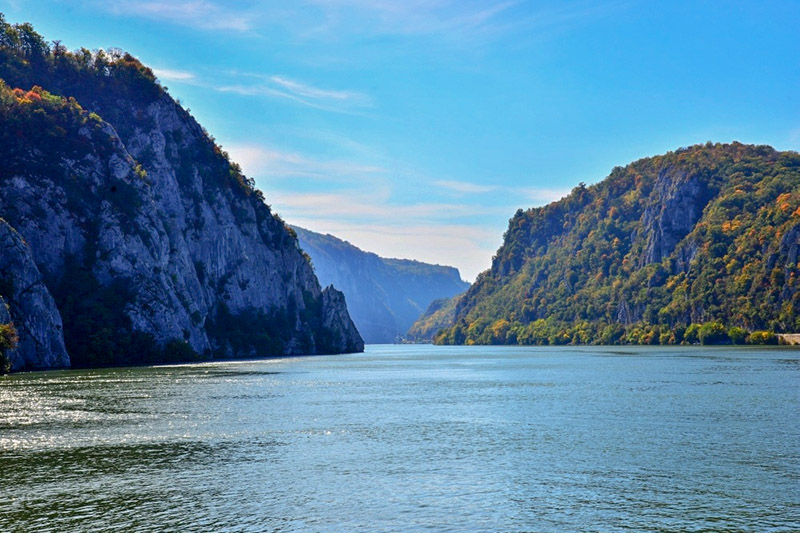
Amazing! Photo: Piroska Koltai - Wine a'More Travel
After winding our way along the Danube’s banks, we reached our boat and sailed back up the river between the sheer, vertical sides of the Iron Gates, Serbia on our one side and neighbouring Romania on the other. This extraordinary gorge, carved out of the Carpathians by the Danube and narrowing to just 140m wide in Veliki Štrbac area, is Europe’s deepest, largest and perhaps most spectacular. Trajan’s Tablet (Tabula Traiana), an ancient Roman monument embedded in the rock on the Serbian side of the gorge, which can only be approached from the water, demonstrates the importance of the Iron Gates to the Roman Empire – it is believed to mark a part of the Djerdap road that the Romans built to prepare for war against the Dacians.
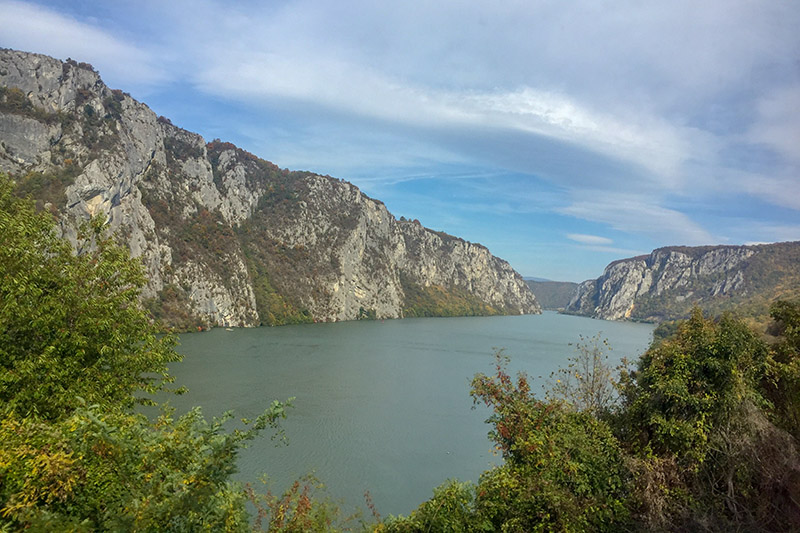
On the road by Daniel Ercsey
Following the unmissable cruise through this magnificent landscape, we headed off to Matalj Winery in search of eastern Serbian wine. We were in luck! The partially constructed winery was hosting eight wineries from the region who had brought their wares for us to sample, as well as laying on plenty for us to munch on as we tasted. There was a wide variety of wines on offer, including the local floral Crna Tamjanika (Black Tamjanika) and a fair few Cabernet Sauvignons – as it is the hottest area of Serbia, it’s considered to be the top region for Cabs.
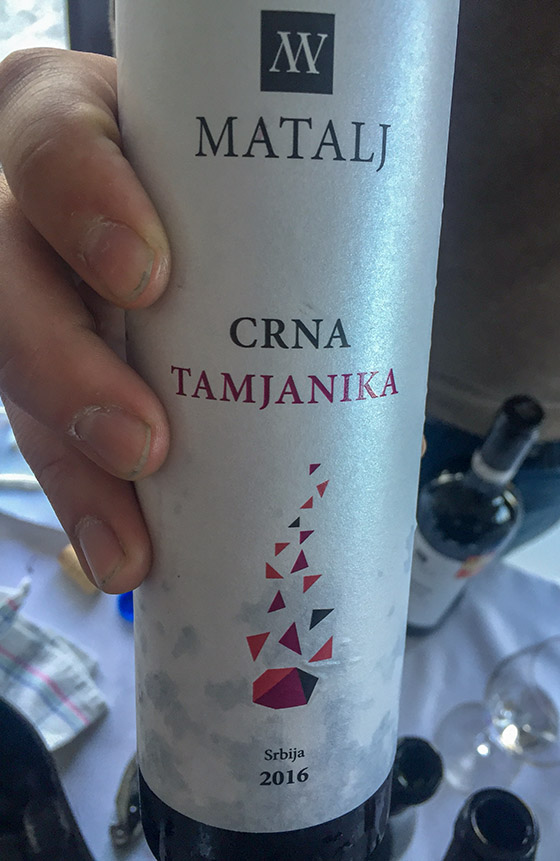
Photo: Daniel Ercsey
Crna Tamjanika is traditionally vinified as a dry wine, but some modern wineries today lean towards semi-sweet or sweet versions, but the Vinarija Raj had a lovely fresh, light dry version for us to sample, endowed with attractive floral, cherry and raspberry notes. Vinarija Jović had brought along another black variety native to Serbia and Montenegro (and also found in Macedonia), Vranac. Vranac means Black Horse and the wine was certainly purple in colour with grippy tannins yet attractive fresh fruit along with a touch of meatiness. Our hosts, the Vinarija Matalj had some very well-made Cabernet Sauvignons, with the premium version from 2012 showing wonderfully ripe fruit balanced by crisp acidity and supple tannins and a long finish of black fruit, pencil shavings and chocolate. The sweetness of their fruity, floral Crna Tamjanika was balanced by lively acidity. As well as nicely crafted Chardonnay and Pinot Noir, new winery Vinarija Lastar poured a lovely aromatic Tamjanika (the white version this time) with bright acidity and beautiful Muscat notes. Vinarija Vimid’s structured, taut Cab with wonderful varietal character also went down a treat.

Monk Platon by Daniel Ercsey
A young monk from the Vinarija Bukovo Monastery showed us an array of well-made wines, including two contrasting Chardonnays – one unoaked and one sur lie – along with a very light, fragrant Crna Tamjanika. Incidentally, the monastery was home to the first Serbian school of wine and fruit growing, established in 1891. Vinarija Alekśić, run by three sisters, had another dark Vranac on offer, with smoky, dark fruit, earthiness and herbal notes, as well as a white blend of Sauvignon Blanc and Smederevka, another widely planted Serbian variety, a herbal cocktail of green fruits. Boutique producer Vinarija Izba Jovanovic simply had the most wonderful Merlot, crying out to be laid down for a few years to develop even greater complexity. Vinarija Dajić had a ripe fruity Cabernet Franc, a bit high on the alcohol side however, to complement its intense, long Cabernet Sauvignon.
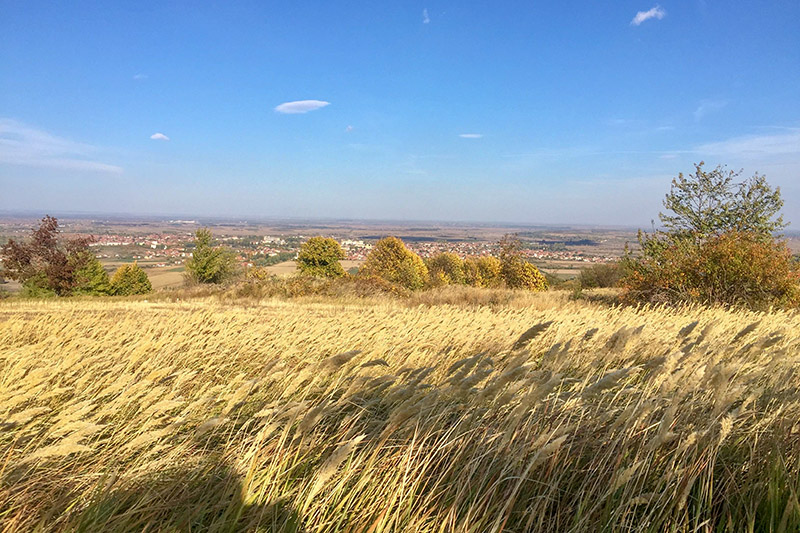
Below the Matalj Winery you can see Negotin city. Photo: Daniel Ercsey
Last stop on the day’s tour was a visit to Rajačke Pivnice, or Pimnice, to see the collection of over 270 old stone houses built between the mid-18th century and the 1930s. These old wine cellars are perched on the top of the Belo brdo hill, 2km above the village of Rajac. A candidate for UNESCO World Heritage protection, these unique cellars clustered around the labyrinthic, twisting streets, appeared abandoned at twilight and then pitch blackness, giving the whole place a rather ghostly atmosphere after a hike up the hill, lit by mobile torchlight. The headstones in the equally eerie cemetery at the end of the Pivnice were carved from the same sandstone as the buildings provided the backdrop for ghostly photos. A centuries-old mulberry tree was where patron saints were celebrated and the main square with its drinking fountain added to its charm, at least it probably would during daytime! Apparently, in daylight, there are also spectacular views from the top of the hill.
Weary #winelovers finally staggered back down the hill to face a long bus ride back to Belgrade, fortified by a taste of one of the cellars’ contents.



